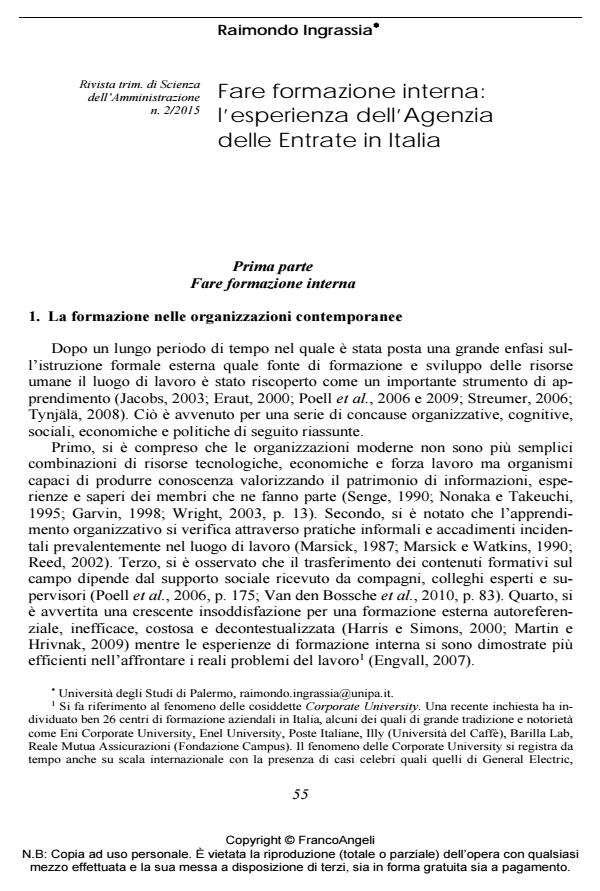Fare formazione interna: l’esperienza dell’Agenzia delle Entrate in Italia
Titolo Rivista RIVISTA TRIMESTRALE DI SCIENZA DELL’AMMINISTRAZIONE
Autori/Curatori Raimondo Ingrassia
Anno di pubblicazione 2015 Fascicolo 2015/2
Lingua Italiano Numero pagine 28 P. 55-82 Dimensione file 144 KB
DOI 10.3280/SA2015-002004
Il DOI è il codice a barre della proprietà intellettuale: per saperne di più
clicca qui
Qui sotto puoi vedere in anteprima la prima pagina di questo articolo.
Se questo articolo ti interessa, lo puoi acquistare (e scaricare in formato pdf) seguendo le facili indicazioni per acquistare il download credit. Acquista Download Credits per scaricare questo Articolo in formato PDF

FrancoAngeli è membro della Publishers International Linking Association, Inc (PILA)associazione indipendente e non profit per facilitare (attraverso i servizi tecnologici implementati da CrossRef.org) l’accesso degli studiosi ai contenuti digitali nelle pubblicazioni professionali e scientifiche
Questo studio si prefigge un duplice obiettivo: ricostruire il quadro dei fattori-chiave che spinge le organizzazioni a realizzare processi di formazione interna e verificarne la validità sul campo. L’articolo pertanto si divide in due parti. Nella prima parte vengono individuati sei fattori-chiave che spingono alla formazione interna: la specificità del luogo di lavoro, la rilevanza delle interazioni, delle relazioni e della comunicazione ai fini dell’apprendimento, l’apprendimento centrato sulla persona, la formazione degli adulti, l’implementazione di strategie organizzative, il bilancio dei costi e dei benefici della formazione. Viene poi illustrato un modello operativo di riferimento per la formazione interna. La seconda parte presenta lo studio sul campo del sistema di formazione interna dell’Agenzia delle Entrate. La ricerca conferma gli assunti della prima parte con l’eccezione del fattore "specificità del luogo di lavoro" che presenta alcune ambivalenze.
Parole chiave:Formazione interna, fattori chiave, Agenzia delle Entrate
Raimondo Ingrassia, Fare formazione interna: l’esperienza dell’Agenzia delle Entrate in Italia in "RIVISTA TRIMESTRALE DI SCIENZA DELL’AMMINISTRAZIONE" 2/2015, pp 55-82, DOI: 10.3280/SA2015-002004